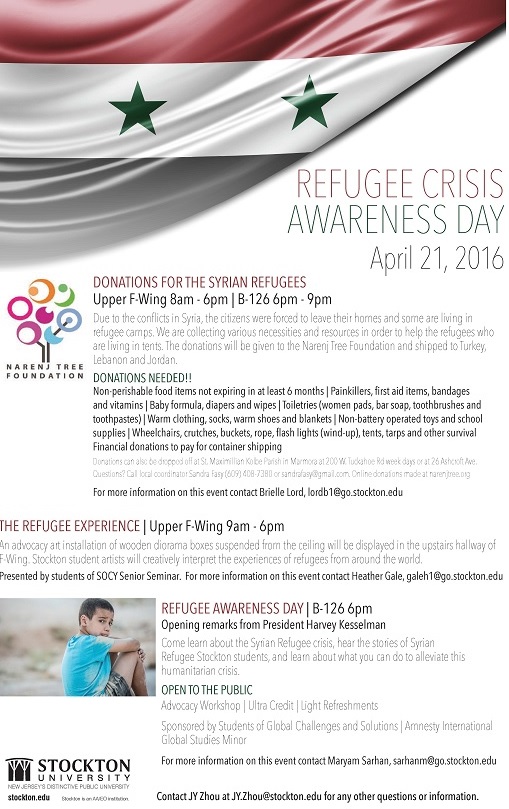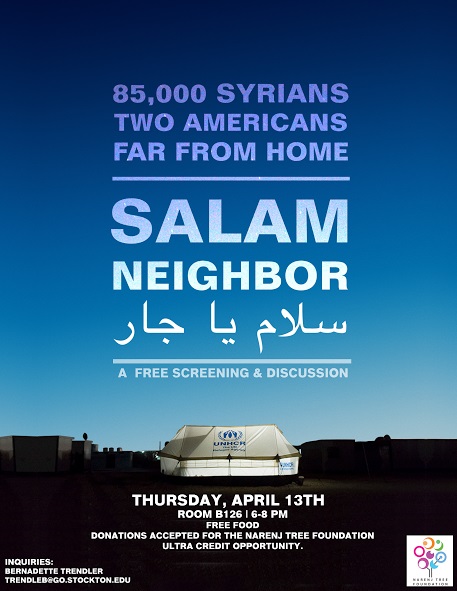Faculty - Approaches
Global learning should be systematically and purposefully designed throughout a student's academic and life experience, their major(s) and/or minor(s). Faculty can make this happen by using these 10 ways to develop global learning in their General Studies and Program courses.
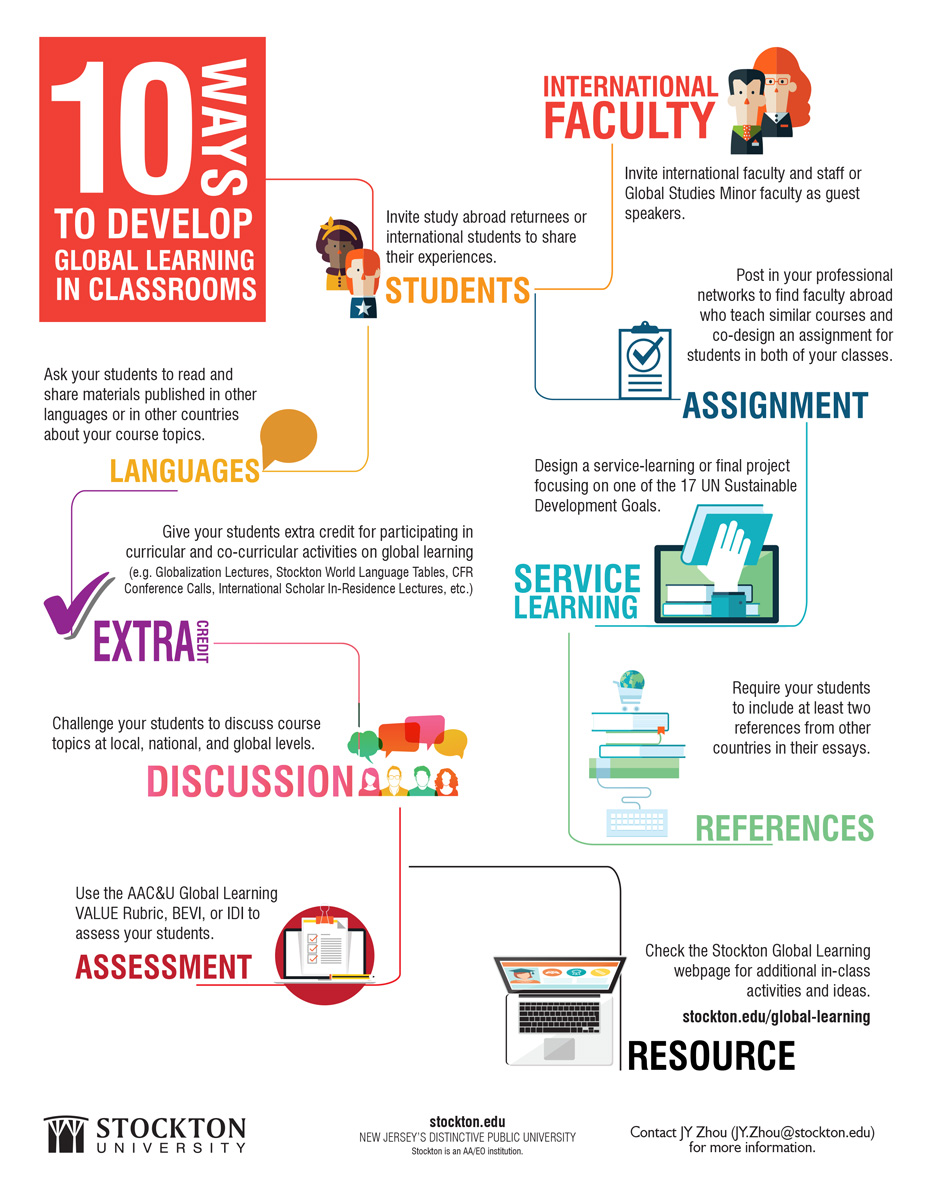
Stockton University has designed and developed four effective collaborative approaches that will lead to authentic and effective global learning because they:
- Highlight the interdisciplinary, creative, and innovative nature of global learning,
- Emphasize the close connections between faculty, students, and community,
- Underline the essential and extensive roles of languages and technology to advance dialogs across disciplines, boundaries, and borders, and
- Provide specific ideas and methods of globalizing the curriculum from revising just one section, an assignment, or an activity of a course to (re)designing a complete course with a global learning focus on course content, instruction strategies, learning outcomes, and assessment.
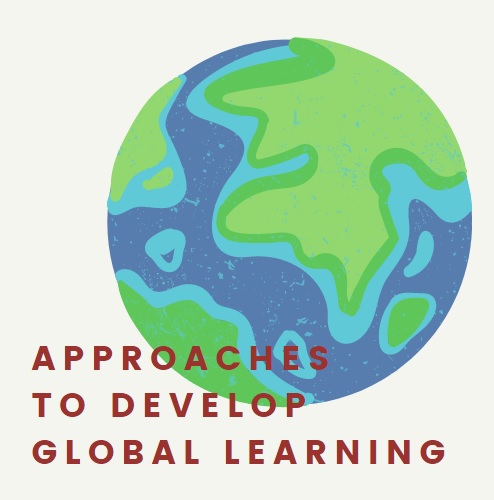



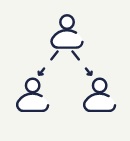
Learn More About These 4 Approaches to Global Learning Below:
Cultures and Languages Across the Curriculum (CLAC) is developed with the idea that:
Knowledge exists within and is shaped by culture and, therefore, just as materials in many languages and cultures can and should be incorporated into all parts of the curriculum. Global awareness can and should inform the teaching of academic content in many curricular contexts. That is, to integrate language and cultural components into all aspects of curriculum across disciplines.
Three rules of CLAC are:
- Global learning can build from existing resources and skills
- Global perspective can be applied in all subjects; and
- Institutions can enhance students’ experience, knowledge, and global awareness – without going abroad.
Watch Dr. Zhou's talk at University of Colorado Boulder at: Cultures and Languages Across the Curriculum: An Effective Approach to Globalizing the Curriculum.
What is CLAC? Resources to learn more:
- Read more about the CLAC approach at Cultures and Languages Across the Curriculum (CLAC) Consortium.
- Check out Slides and Workshop Materials from a 2021 CLAC virtual event that explains more about this approach.
- Soneson, D., & Zilmer, C. (Eds.), Developing Responsible Global Citizenship Through Cultures and Languages Across the Curriculum (CLAC): Selected Papers from the 2016 CLAC Conference. Minneapolis: University of Minnesota, Center for Advanced Research on Language Acquisition. http://carla.umn.edu/resources/working-papers/documents/Proceedings-2016CLAC.pdf
How to develop CLAC in your classrooms/projects:
Dr. Zhou is available and happy to visit your class, talk about utilizing students' linguistic and cultural skills to complete various course assignments and project, and support your students in completing these assignments and projects.
Please see the in-class presentation - Research with a Multicultural / Bilingual Perspective - that she prepared for Dr. Priti Haria's EDUC 2241 Educating Children with Special Needs. Please contact Dr. Zhou for her availability.
Examples of CLAC at Stockton:
Dr. JY Zhou, Director of Global Engagement
Bi-weekly assignments and group discussions:
- Students are expected to find and read materials in other languages/countries about the bi-weekly topics before class and participate in the in-class CLAC discussion, including answering questions individually and in a group.
- Topics include: citizenship education, stereotype of Americans, modern art, diaspora, elderly care, and environmental issues.
Read more of Dr. Zhou's CLAC approach at AAC&U News April 2017 -- At Stockton, Global Learning Moves beyond the Classroom and into Daily Lives.
Dr. Laura Zucconi, Associate Professor of History

Dr. Kaite Yang, Assistant Professor of Psychology
Course objectives in Adolescent Psychology:
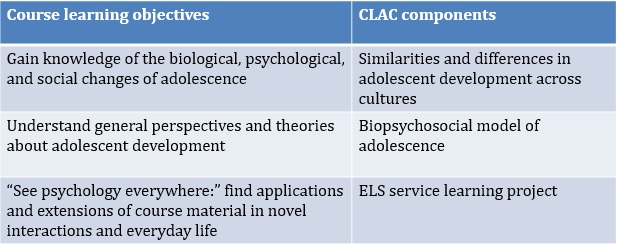
Culture blog assignment and discussion:
- Find a news article on adolescence in a different country
- Summarize the article and identify concepts and processes discussed in class
- Present and discuss the article in small groups
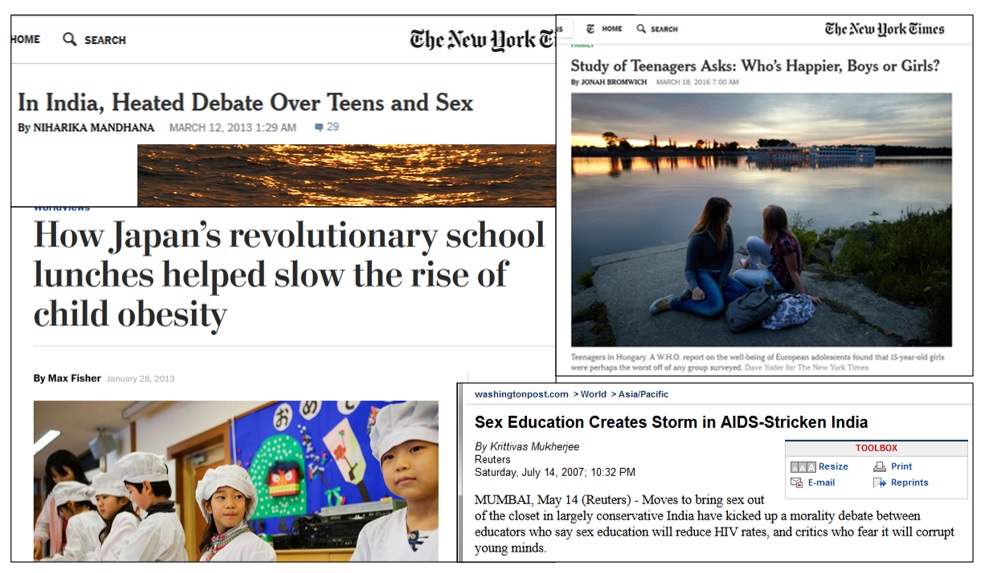
Virtual Exchange and collaborative international online learning (COIL) have become popular because technology has expanded the boundaries of traditional classrooms and provided a variety of opportunities in connecting our students with the world and enhancing their global learning skills. This approach facilitates interactions between our students and students in international institutions, via collaboration between respective faculty. It is intended to bring the valuable transformative intercultural communication to all students at Stockton.
Invitation to Participate in Virtual Exchange Project in your next course!
We invite you to consider integrating virtual exchange projects in your courses. Through pairing your students to work with students in international institutions, we aim to provide an opportunity for all students to develop global perspectives, interdisciplinary breadth, and intercultural competence. Please see the Virtual Exchange Program Info Session Slides here. If you’re interested in virtual exchange projects, please contact JY Zhou at JY.Zhou@stockton.edu.
Photo by Markus Spiske on Unsplash
Options for Virtual Exchange & COIL at Stockton:
Virtual Exchange Project 1: COIL (Collaborative Online International Learning)
COIL is an effective approach to develop students’ intercultural competence and global perspectives through virtually connecting classrooms across institutions. It provides a unique and easy-accessed opportunity for students to communicate face-to-face with students in other countries and work collaboratively on course projects.
How does COIL Work?
- One faculty at Stockton University and one faculty at an international institution are teaching similar topics in their individual courses.
- Students in these two classes will communicate with each other via synchronous and/or asynchronous technology.
- The formats, schedules, and length of COIL projects are flexible to meet individual faculty/course’s needs and requirements. Some COIL courses ask students to meet just for a couple of sessions (synchronous or asynchronous, in class or after class) and some courses may ask students to collaborate throughout the semester and work on the course projects together.
Some of our COIL courses in Fall 2020:
- Heather Swenson Brilla, who teaches Introduction to Sociology, worked with Lindsay Neill’s Master of Gastronomy class at Auckland University of Technology in New Zealand on breakfast and what it tells us about societies. Read the Stockton news here.
- Robert Mejia, who teaches two courses in Cannabis Studies Minor, worked with Dr. Flores Monsivais at Universidad Autónoma de Baja California in Mexico on medical cannabis. See the slides and recording of our presentation at the International Education Week here.
- Drs. Helana Girgis, Jung Lee, and Kaite Yang joined me in a COIL info session in the summer 2020 on working with universities in Egypt, Mexico, South Korea, and Netherlands. Here are the slides and recording.
Virtual Exchange Project 2: Soliya Connect Program
Soliya Connect Program (US-MENA) is one of the flagship virtual exchange initiatives hosted by the Stevens Initiative under the Aspen Institute. It is a virtual exchange program that brings together college students in the U.S. and in the Middle East and North Africa (MENA) for 8-week face-to-face online live dialogues. I see Soliya Connect Program as a mini stand-alone virtual exchange project, so you can easily take it and plug into your courses to develop students’ global perspectives of others around the world on important socio-political issues related to your course topics, as well as their 21st Century skills such as critical thinking, cross-cultural communication, and media literacy. Please see the attachments for the Soliya description and student assignments.
How does Soliya Connect Program work?
- Your students will meet face-to-face synchronously for 2 hours/week for 8 weeks in small groups with students from MENA.
- You can build it in your class time or as a homework.
Soliya Connect Program Courses in Fall 2020:
- Dr. Maritza Jauregui, GNM 1056 Environmental Citizenship
- Dr. Helana Girgis, GEN 1048 Perspectives of Childhood
Want to Start Small? Virtual Exchange and COIL can also Include:
- Synchronous lectures delivered jointly by both faculty
- Synchronous guest speakers with follow up group reflection activities
- Asynchronous group projects via social media platforms
- After-class group assignment from two classes and joint presentations
- Peer review of students work in other classes
- Recorded guest speaker presentations as a catalyst for asynchronous follow-up group discussions
COIL Resources:
- Intro to COIL: https://innovate.suny.edu/introtocoil/
- Soliya: https://soliya.net/
- Facilitating Collaborative Learning in Virtual Exchange, presented by Soliya, September 6th, 2017.
- TakingITGlobal: A network for global learning
- Emphatico (K-12): https://empatico.org/
- Digital Promise Global (multimedia stories & connections): http://global.digitalpromise.org/
- The Wonderment (K-12): https://thewonderment.com/
- Stevens Initiative on Collaborative Online Visual Exchange: http://www.stevensinitiative.org/resources/
- Program Evaluation in Virtual Exchange, presented by Research Triangle Institute (RTI), October 11th, 2017.
- Building Strong International Partnerships, presented by the SUNY Center for Collaborative Online International Learning (COIL), December 13th, 2017.
- Project-Based Learning through Virtual Exchange, presented by Partnership for 21st Century Learning, January 31st, 2018.
- Using FlipGrid: https://catlintucker.com/2017/10/flipgrid-connect-with-classrooms/
- Virtual exchange and COIL Hub: https://community.class2class.com/
- The Collaboratory (housed the U.S. Department of State's Bureau of Educational and Cultural Affairs): Virtual Exchange Toolkit
- iEARN’s Teacher’s Guide to Online Collaboration & Global Projects
- Virtual Exchange Typology by Stevens Initiative: https://www.stevensinitiative.org/wp-content/uploads/2020/04/Stevens-Initiative-Virtual-Exchange-Typology.pdf
Other Examples of Virtual Exchange & COIL at Stockton:
Stockton University is collaborating with Universidad de Monterrey (UDEM) and Rotterdam University of Applied Sciences.
Course Projects:
- Dr. Jung Lee and her Digital Storytelling course: Stockton and UDEM students co-developed music videos – Video 1, Video 2, and Video 3. Here is the course Facebook heading:
- Dr. Kaite Yang and her PSYC 2201 Adolescence course.


Community Engagement and Service-Learning affords students the opportunity to learn and apply skills in real-world immersive experiences. Global learning is a set of skills, and students are encouraged to develop their global learning skills in service-learning and civic engagement projects.
Resources:
- Campus Compact Community-based global learning
- Syria Conflict Simulation Game (St. Edward's University): http://sites.stedwards.edu/syriasimulation/
- My World 360° (UN VR films and stories): http://global.digitalpromise.org/2018/04/17/launching-world-360-new-global-storytelling-initiative-youth/
- Learning Studio Stories (Human stories behind UN SDGs development): http://global.digitalpromise.org/learning-studios/gallery/
- UN VR films: http://unvr.sdgactioncampaign.org/vr-films/
- UN web TV live: http://webtv.un.org/
- The United Nations Academic Impact (UN SDGs impacts): https://academicimpact.un.org/
- UN SDGs as a framework: https://sustainabledevelopment.un.org/sdgs
- UN Sustainable Development Solutions Network: https://www.unsdsn.org/sdg-academy
- SDG Academy: https://sdgacademy.org/
- UN SDG Free Courses: https://www.humanrightscareers.com/un-sustainable-development-goals-courses/?utm_sq=gdclapr756
Examples of Community Engagement & Service-Learning at Stockton:
Dr. Kaite Yang, Assistant Professor of Psychology
ELS-PSYC collaboration / ELS Service-Learning Project
Goals
- Promote global engagement in the Stockton community
- Provide conversational English language practice for ELS students
- Learn about how adolescent experiences are similar and different across the world
- Learn techniques for positive interactions with international students and non-native English speakers
Structure: Initial mixer event --> Reciprocal interview
Assessment: Interview transcript and self-reflection paper

Dr. Ramya M. Vijaya, Professor of Economics
Each year, students in Global Studies minor capstone course 'Global Challenges and Solutions course', GIS 4658, are involved in service learning projects in partnership with organizations working on issues of global concern. In the spring 2017, a group of students organized the Oxfam Hunger Banquet on campus to raise awareness about global hunger and inequalities in the food distribution system. This year’s event included a collaboration with Campus Kitchen. A groups of students volunteered with Campus Kitchen after being inspired by their attendance at the Hunger Banquet. A second group of students worked with the local Amnesty International group and Narenj Tree Foundation, a refugee relief organization. They organized a screening of the film ‘Salam Neighbor’ to raise awareness about the refugee crisis. The students also lead a well-attended discussion around refugee issues after the film screening. In addition, this group also raised funds for Narenj Tree through multiple bake sales through the semester and researched and put together, with the help of the local Amnesty International chapter, a petition to expand refugee intake in the US. Group members have continued their involvement with Narenj tree after the semester with visits to the Narenj Tree warehouse in Pennsylvania to help with organizing and loading relief supplies for shipment. Students have also continued their involvement with the local amnesty chapter. In previous years students organized a Day of Refugee awareness event.
Other Service-Learning Events Centered on Global Learning:
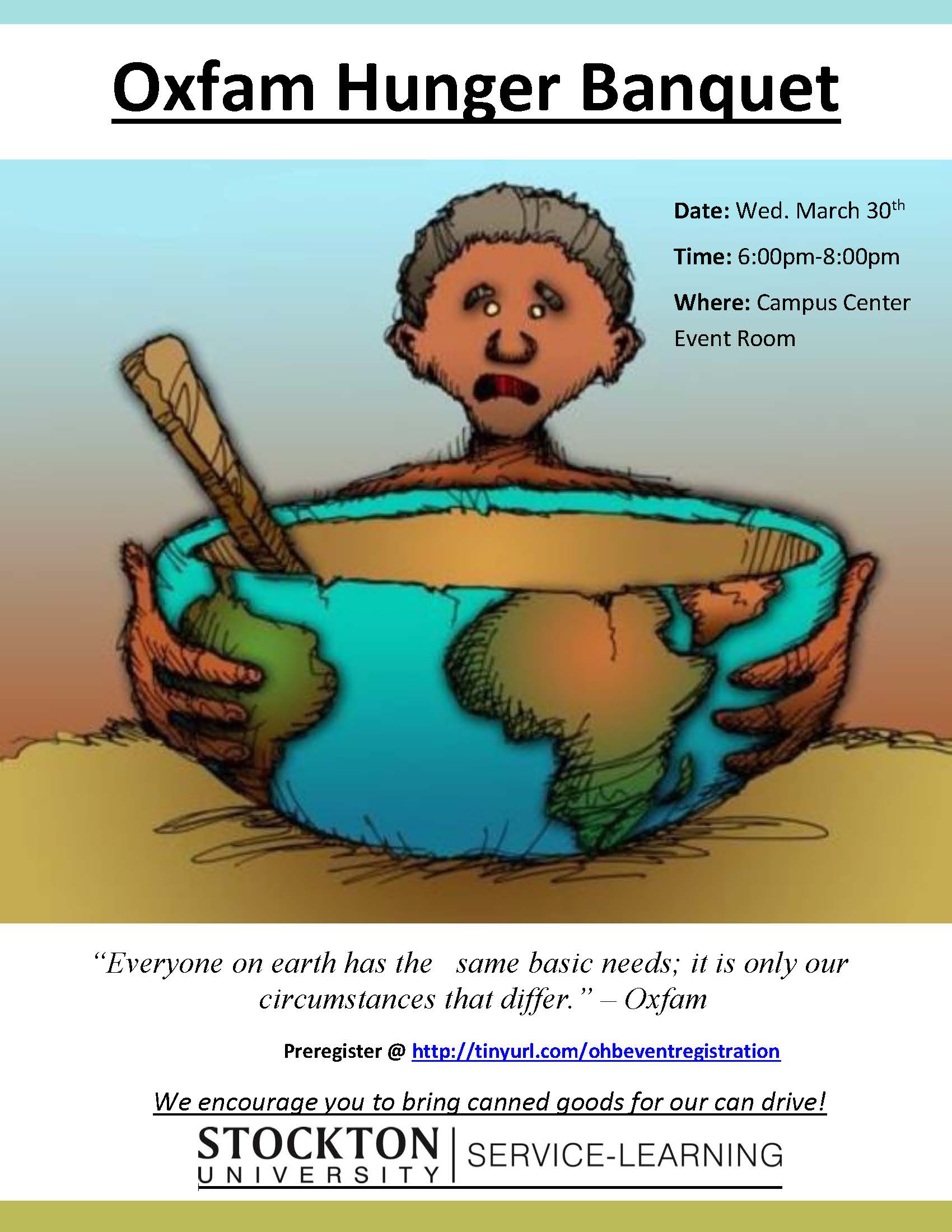
Collaborative Teaching and Knowledge Transformation can refer to partnerships forged on our campus or with off-campus organizations or other institutions. The interdisciplinary nature of global learning requires creative collaborations between faculty, students, and communities.
Example of Collaborative Teaching & Knowledge Transformation at Stockton:
Dr. Mariana Smith, Assistant Professor of Art (Printmaking) and Dr. JY Zhou, Internationalization Specialist
They are doing a pilot to connect the ARTV Image and Typogrpahy 2265 (Dr. Smith) and GIS 3673 Understanding Global Learning (Dr. Zhou). Activities include a joint class, discussion and assignments between students in two classes, and guest lecturing at each other's class. Please click Here for the presentation slides Dr. Smith prepared for Dr. Zhou's GIS 3673 Understanding Global Learning

